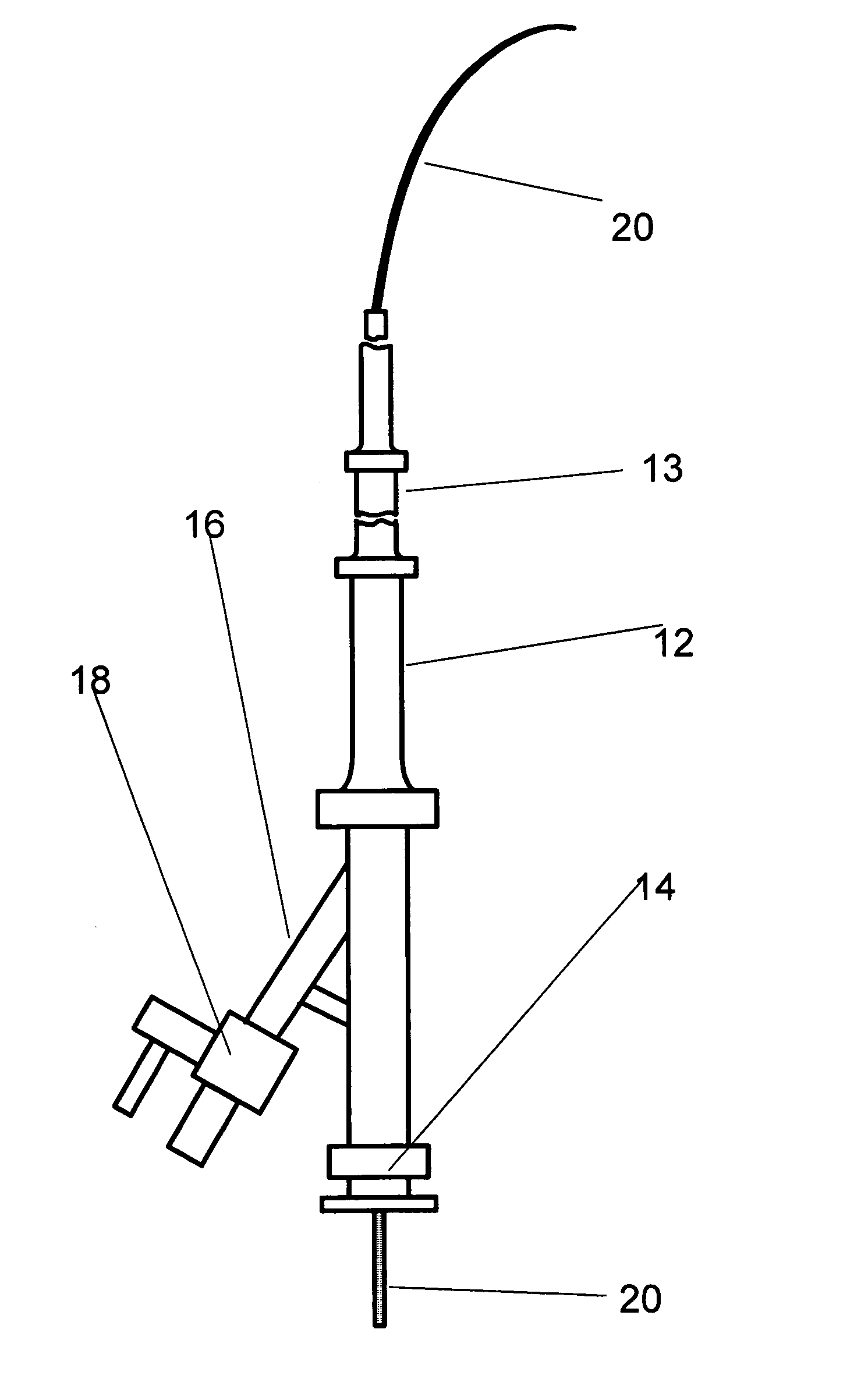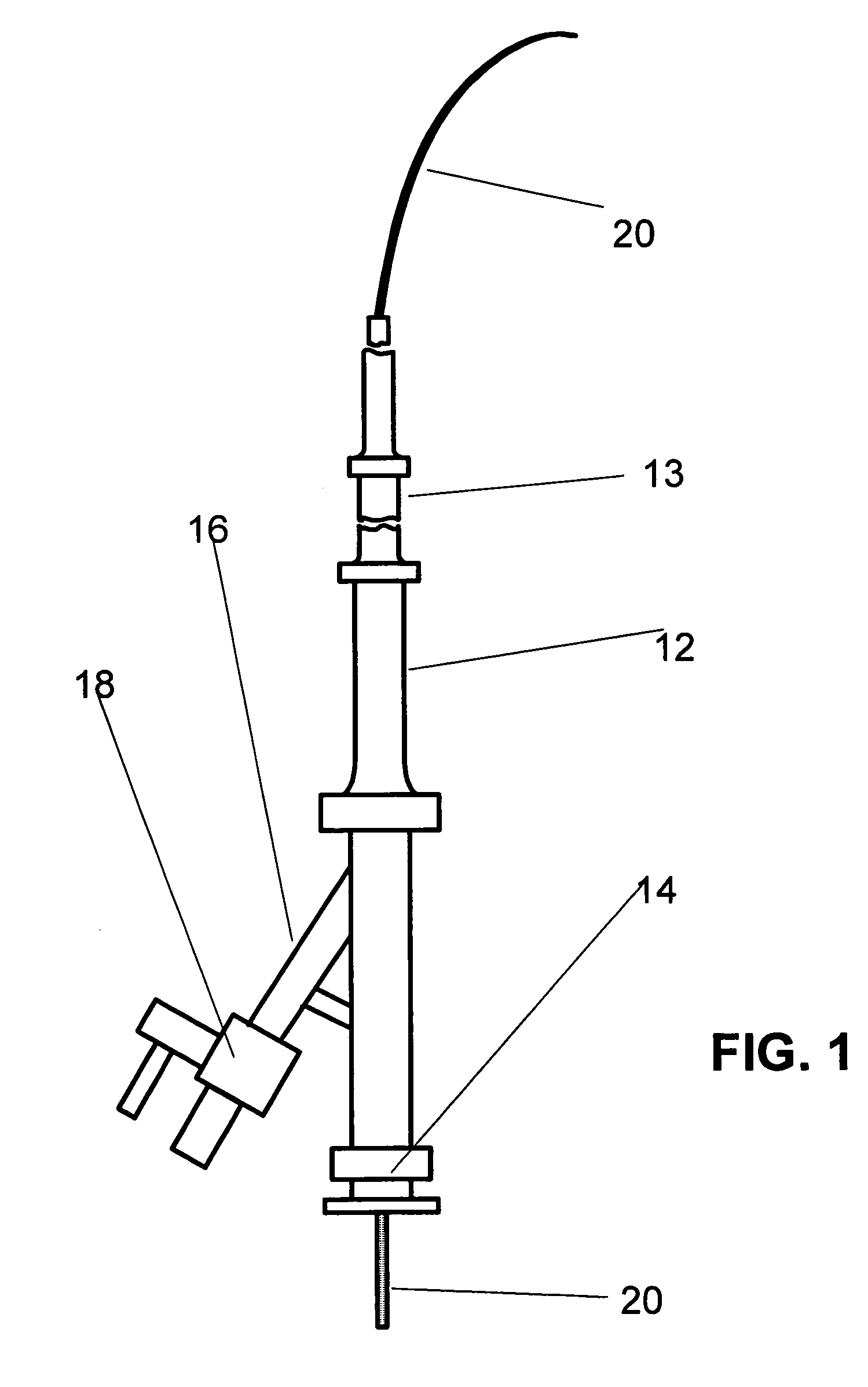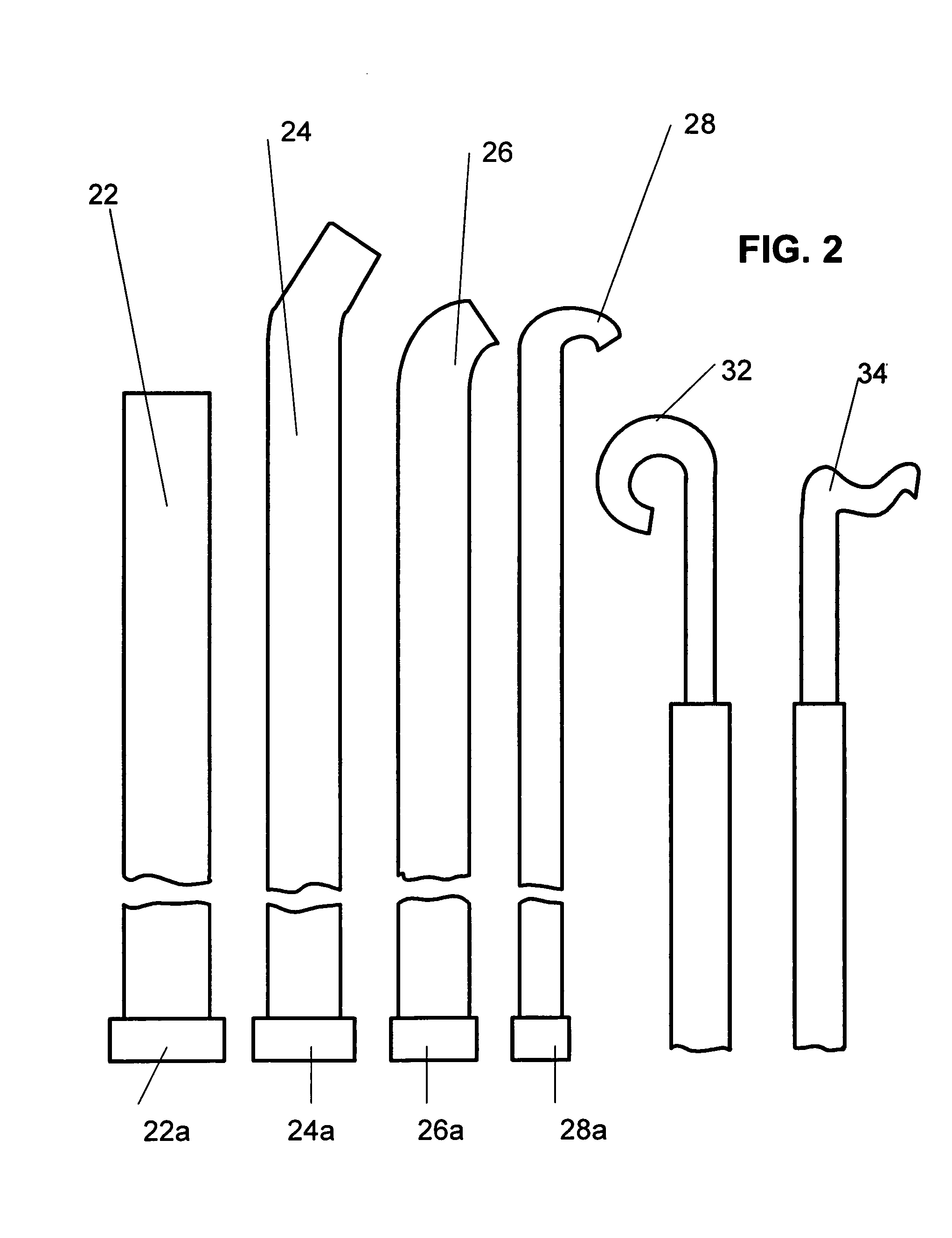Method and device for endovascular treatment of the Alzheimer's disease
a technology for alzheimer's disease and endovascular treatment, applied in the field of medicine, can solve the problems of difficult diagnosis of alzheimer's disease, complete degeneration of personality, trigger mania, and other side effects, and achieve the effect of reducing the possibility of closing the vessel passag
- Summary
- Abstract
- Description
- Claims
- Application Information
AI Technical Summary
Benefits of technology
Problems solved by technology
Method used
Image
Examples
example 1
[0043]Male Patient T., 56 years old, suffered for more than 2 years from evident derangement of memory and intellect, could not work, could not drive a vehicle, and was diagnosed with Altzheimer's disease.
[0044]The pre-operative examination included computerized tomography and magnetic resonance tomography of the brain, scintography, rheography, and brain angiography, which revealed involuntary changes accompanied by atrophy of the cerebral cortex in the frontal and parietal parts of the brain, abnormalities in the structure of the hippocampus, abnormalities in the blood circulation, abnormalities in pulse volume in the carotid sinuses, as well as reduction in the capillary phase of contrast enhancement in the frontoparietal areas with development of multiple arteriovenous shunts.
[0045]Endovascular laser intervention was carried out two years after manifestation of the disease symptomatic. The operation was carried out under carried under roentgenoscopy. Puncturing and catheterizati...
example 2
[0052]Female patient P., 75 years old, suffered from a severe form of dementia, had mental and intellectual disorders, did not recognize relatives, did not remember events that just happened, and was diagnosed with Alzheimer's disease.
[0053]The patient was subjected to preoperative examination identical to the one described in Example 1. Operative endovascular laser intervention was conducted six years after manifestation of the disease symptomatic. The operation was carried out in the same sequence of operating steps as described in Example 1.
[0054]An 8 F introducer was installed, a first 7 F guiding catheter was coaxially guided through the introducer, and a second 5 F modified guiding catheter was guided through the first catheter.
[0055]Laser treatment was carried out with the use of a low-energy laser with the power of 20 mW operating in a combined continuous-pulsed mode. The light-guiding optical-fiber device comprised a 3 F catheter with a quartz-polymer type of light-guide ha...
PUM
 Login to View More
Login to View More Abstract
Description
Claims
Application Information
 Login to View More
Login to View More - R&D
- Intellectual Property
- Life Sciences
- Materials
- Tech Scout
- Unparalleled Data Quality
- Higher Quality Content
- 60% Fewer Hallucinations
Browse by: Latest US Patents, China's latest patents, Technical Efficacy Thesaurus, Application Domain, Technology Topic, Popular Technical Reports.
© 2025 PatSnap. All rights reserved.Legal|Privacy policy|Modern Slavery Act Transparency Statement|Sitemap|About US| Contact US: help@patsnap.com



